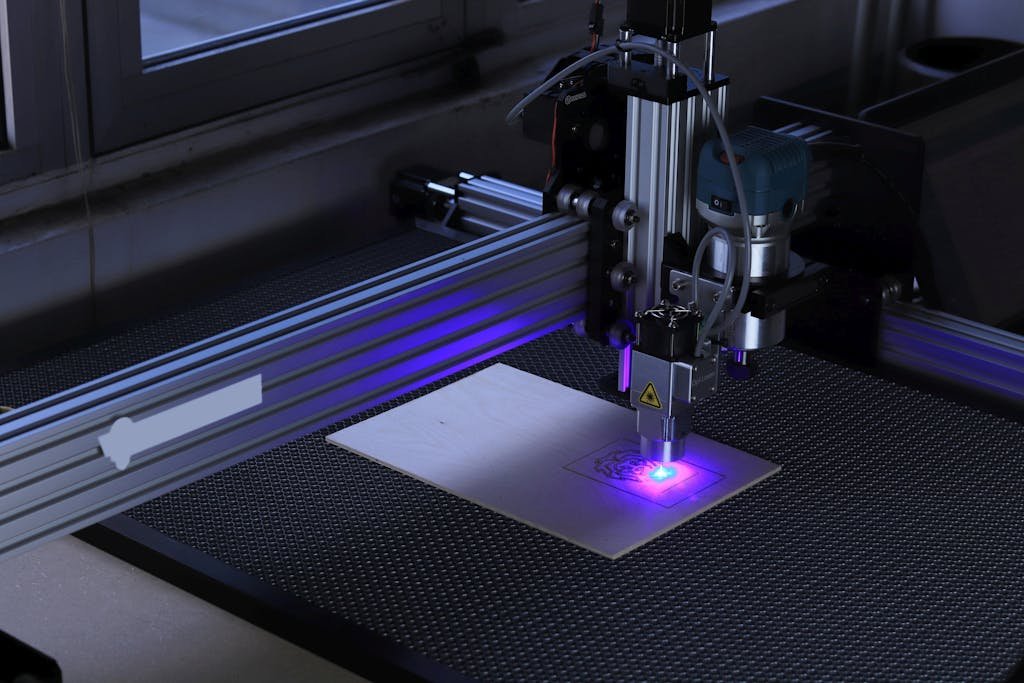Explore Latest Tech Trends Today
In today’s rapidly evolving digital landscape, staying ahead of the Explore Latest Tech Trends Today is essential for businesses, innovators, and everyday users alike. As we delve into 2025, emerging technologies are reshaping industries, from artificial intelligence enhancing daily operations to sustainable solutions addressing global challenges. This article explores the most impactful tech trends, drawing from expert insights and recent developments. Whether you’re a tech enthusiast or a professional seeking strategic advantages, understanding these advancements can drive innovation and efficiency. Key areas include AI integration, quantum computing breakthroughs, and green energy innovations, all poised to transform how we live and work. With the current date being September 24, 2025, these trends reflect real-time progress, emphasizing practical applications and future potential.
The convergence of technologies like AI and IoT is creating smarter ecosystems, enabling seamless connectivity and data-driven decisions. For instance, agentic AI systems are automating complex tasks, reducing human intervention while boosting productivity. Meanwhile, sustainability remains a core focus, with trends like energy-efficient computing tackling environmental concerns. This overview not only highlights what’s new but also examines implications for society, economy, and ethics. By optimizing for search terms such as latest tech trends 2025 and emerging technologies, we aim to provide comprehensive, actionable insights to help you navigate this dynamic field effectively.
Artificial Intelligence and Machine Learning Advancements
Artificial intelligence continues to dominate the tech scene in 2025, with generative AI leading the charge by producing human-like content across text, images, and audio. This technology enhances productivity in creative industries, customer service, and data analysis, allowing businesses to personalize experiences at scale. According to recent reports, AI-accelerated development is shortening software lifecycles by up to tenfold, enabling faster innovation. However, challenges like ethical use and data privacy persist, requiring robust governance. As AI becomes ubiquitous, its integration into everyday tools promises transformative impacts, from smarter assistants to predictive analytics in healthcare.
Agentic AI, a standout trend, involves autonomous systems that plan and execute goals independently. These agents augment human capabilities, handling tasks like workflow automation and decision-making with minimal oversight. In sectors like finance and retail, they identify trends and optimize operations, but governance is crucial to mitigate biases and ensure alignment with user intentions. This evolution marks a shift toward a virtual workforce, where AI partners with humans for enhanced efficiency. Potential risks include job displacement, underscoring the need for upskilling programs to adapt the workforce.
Hyperautomation combines AI, machine learning, and robotic process automation to streamline end-to-end business processes. By automating mundane tasks, it frees employees for strategic roles, as seen in loan servicing transformations that cut costs significantly. Success hinges on strong data foundations and flexible workflows, balancing automation with human insight for complex scenarios. In 2025, this trend is accelerating digital transformation, but organizations must address integration challenges to realize full benefits.
AI governance platforms are emerging to manage ethical and operational aspects of AI deployment. These tools enforce policies, ensure transparency, and handle lifecycle management, building trust in AI systems. With varying regulations across regions, they help navigate compliance while fostering responsible innovation. This trend is vital as AI permeates industries, preventing misuse and promoting accountability. Leaders are prioritizing these platforms to align AI with organizational values and legal standards.
Also Read More : Mobile Apps and Tech Reviews Hub
Quantum Computing Breakthroughs Explore Latest Tech Trends Today
Quantum computing is revolutionizing problem-solving by leveraging quantum mechanics for unprecedented processing speeds. In 2025, it’s advancing cryptography, drug discovery, and optimization tasks beyond classical computers’ reach. Breakthroughs in error correction and scalable qubits are making it more practical, with applications in simulating molecular interactions for new materials. However, accessibility remains limited due to high costs and complexity, though cloud-based quantum services are democratizing access. This trend promises to unlock solutions for climate modeling and financial forecasting, driving scientific progress.
Post-quantum cryptography is gaining urgency as quantum threats loom over current encryption methods. This involves developing algorithms resistant to quantum decryption, safeguarding data in transit and at rest. Organizations are testing these for compatibility, as they may require system overhauls. The trend is critical for national security and financial sectors, where data breaches could be catastrophic. By adopting PQC early, businesses can future-proof their infrastructure against emerging risks.
Hybrid computing merges quantum, classical, and specialized hardware to tackle complex computations efficiently. This approach enables high-speed innovation, particularly in AI training and scientific simulations. In 2025, it’s fostering environments for breakthrough discoveries, though security and cost barriers persist. As technologies mature, hybrid systems will enhance automation and human capabilities, transforming industries like pharmaceuticals and logistics. Strategic investments are key to harnessing its potential.
Sustainable Tech Innovations
Sustainable technologies are at the forefront in 2025, with energy-efficient computing reducing carbon footprints through optimized architectures and renewable integration. This trend addresses environmental pressures by minimizing data center energy use, which is skyrocketing due to AI demands. Techniques like specialized hardware and green coding practices are essential, though initial migrations may increase short-term costs. Ultimately, it supports corporate sustainability goals and regulatory compliance, promoting eco-friendly digital growth.
Osmotic power systems harness salinity differences between water sources to generate clean electricity. Using methods like pressure retarded osmosis, they offer renewable energy with low environmental impact. Recent advancements are making this viable for coastal areas, contributing to global energy transitions. By integrating with existing infrastructure, osmotic power could supplement solar and wind, enhancing grid stability and reducing fossil fuel reliance.
Green nitrogen fixation revolutionizes fertilizer production by using bio-inspired systems and sustainable energy to convert atmospheric nitrogen. This reduces the energy-intensive Haber-Bosch process’s environmental toll, which accounts for significant global emissions. Engineered bacteria and sunlight-driven methods promise cost-effective, eco-friendly alternatives, supporting food security amid climate change. Adoption could transform agriculture, lowering pollution and enhancing crop yields sustainably.
Advanced nuclear technologies, including small modular reactors and fusion pursuits, are poised to boost clean power generation. Innovations lower costs and simplify designs, making nuclear more accessible. Projects like ITER aim for fusion breakthroughs, releasing vast energy without long-lived waste. This trend could address energy demands while mitigating climate impacts, though safety and regulatory hurdles remain.
Structural battery composites integrate energy storage into materials like carbon fiber, lightening electric vehicles and aircraft. This dual-function approach improves efficiency and range, potentially reshaping transportation. Safety standards will drive adoption, reducing emissions and costs in mobility sectors.

Metaverse and VR/AR Developments
Spatial computing digitally enhances physical spaces using AR and VR for immersive experiences. In 2025, it’s transforming gaming, education, and e-commerce with interactive visualizations. Healthcare benefits from surgical simulations, while retail offers virtual try-ons. Challenges include device comfort and privacy, but advancements in hardware are broadening accessibility. This trend improves decision-making and collaboration, blending virtual and real worlds seamlessly.
Virtual Reality 2.0 features higher resolutions and better motion tracking, expanding into training and therapy. User-friendly systems lower barriers, enabling realistic simulations for skill development. In corporate settings, VR enhances remote collaboration, reducing travel needs. As costs drop, adoption surges, fostering innovative applications in mental health and entertainment.
Augmented Reality integrates digital overlays into real environments, boosting retail and education. Advanced glasses provide hands-free interactions, visualizing data in real-time. In 2025, AR is key for maintenance tasks, guiding technicians with overlays. This trend enhances productivity and learning, though battery life and accuracy improvements are needed.
Cybersecurity Trends
Disinformation security emerges to combat fake narratives and validate identities. This multilayered approach uses AI for threat detection, protecting brands and reducing fraud. In an era of deepfakes, it’s essential for trust in digital interactions. Continuous adaptation is required to counter evolving tactics, ensuring secure communications.
Zero trust and mesh architectures enhance cyber defenses with continuous monitoring. AI integrates for faster response times, countering sophisticated attacks. Hybrid environments demand seamless tool integration, bolstering resilience against ransomware and breaches.
Generative watermarking embeds invisible tags in AI content to identify synthetics, fighting misinformation. This pixel-level technique promotes online trust, though removal attempts pose challenges. Ethical adoption is key to maintaining content integrity.
Blockchain and Crypto Evolutions
Blockchain extends beyond crypto for secure, transparent transactions in supply chains and voting. Its tamper-proof nature ensures data integrity in medical records. In 2025, integration with AI enhances smart contracts, automating agreements efficiently. Regulatory clarity is driving mainstream adoption, reducing fraud risks.
Decentralized finance evolves with improved scalability, offering inclusive banking alternatives. Innovations like layer-2 solutions reduce fees, attracting users. However, security audits are crucial to prevent exploits, fostering trust in the ecosystem.
5G and Beyond Connectivity
5G expansion delivers ultra-low latency, enabling IoT and autonomous vehicles. Real-time communications transform smart cities, optimizing traffic and resources. In 2025, widespread rollout supports AR applications, enhancing user experiences. Infrastructure investments are key to bridging digital divides.
Edge computing processes data locally for instant decisions, vital for industrial IoT. Reducing reliance on central clouds cuts latency, as in wildfire detection systems. Security and interoperability challenges require standards to maximize benefits.
Collaborative sensing networks AI-enhanced sensors for urban management. Connected devices adjust to data, improving mobility and pollution control. This trend supports environmental monitoring, driving sustainable city planning.
Biotech and Health Tech Innovations
Engineered living therapeutics use microbes to produce drugs internally, cutting costs for chronic conditions. Programmable systems offer on-demand treatments, revolutionizing diabetes management. This biotech advance promises accessible healthcare solutions.
GLP-1s target neurodegenerative diseases by reducing inflammation. Originally for diabetes, they clear toxic proteins in Alzheimer’s, benefiting millions. Clinical trials are expanding applications, easing caregiver burdens.
Autonomous biochemical sensing enables continuous monitoring via wearables. Detecting markers for diseases or pollution, they provide real-time health insights. Expansions to menopause and food safety highlight versatility.
Nanozymes mimic enzymes for therapeutics and purification. Cheaper and stable, they treat cancer and purify water. Ethical hurdles remain, but potential in clinical settings is immense.
Biotechnology in agriculture employs CRISPR for resilient crops. Enhancing pest resistance addresses climate challenges, ensuring food security globally.

Robotics and Automation Trends
Polyfunctional robots perform multiple tasks seamlessly, boosting efficiency in warehouses. Scalable and low-risk, they collaborate with humans, improving ROI. Standardization is needed for broader adoption.
Autonomous vehicles advance with AI for safe navigation. Reducing accidents, they’re transforming logistics and transport. Public acceptance grows with proven safety records.
Autonomous agents act as digital partners, learning from interactions. In service, they personalize experiences, but ethics guide deployment to avoid displacement.
Data Management and Cloud Strategies
Unified data platforms enable real-time access, supporting AI initiatives. Zero-copy strategies cut costs in multicloud setups. Governance ensures compliance and innovation.
Data strategy becomes product strategy, with ERP systems embedding AI for scalability. Monetizing data drives growth, focusing on security and analytics.
Cloud cost optimization uses FinOps for visibility, reducing expenditures. Multicloud approaches balance performance and budgets effectively.
Workforce and Organizational Shifts
Multi-hat roles blur job boundaries, with AI enabling versatile skills. Skills-based strategies foster adaptability and growth.
Workforce reimagined empowers employees via automation, focusing on critical thinking. Continuous learning prepares for AI-integrated workplaces.
Neurological enhancement decodes brain activity for cognitive boosts. Supporting education and safety, it extends productive years, though ethical concerns arise.
Innovation overload warns against hype-driven AI investments. Aligning with ROI and readiness prevents failures.
Ambient invisible intelligence integrates tech unobtrusively for intuitive experiences. Enhancing efficiency, it raises privacy issues.
Build vs. buy decisions in AI era favor custom solutions for differentiation. Balancing costs and capabilities is crucial.
Outcome-based go-to-market strategies prioritize quick ROI. Solution selling strengthens customer engagement.
Conclusion
As we wrap up this exploration of latest tech trends today, it’s clear that 2025 is a pivotal year for technological advancement. From AI’s pervasive influence to sustainable innovations addressing global issues, these trends offer immense opportunities alongside challenges like ethics and accessibility. Businesses must adopt strategic approaches to leverage them, fostering innovation while ensuring responsible use. Staying informed and adaptable will be key to thriving in this tech-driven era.
FAQs
What are the top AI trends in 2025?
AI trends include agentic systems for autonomous tasks, generative AI for content creation, and governance platforms for ethical deployment. These advancements enhance productivity but require careful management of biases and regulations.
How is quantum computing impacting industries?
Quantum computing accelerates complex calculations in drug discovery and finance, offering solutions classical systems can’t handle. Post-quantum cryptography protects data, while hybrid models drive innovation.
What sustainable tech is emerging?
Trends like osmotic power, green nitrogen fixation, and energy-efficient computing reduce environmental impacts, supporting clean energy and agriculture.
What’s new in VR and AR?
Spatial computing and VR 2.0 provide immersive experiences for education and retail, with AR enhancing real-world interactions through advanced devices.
How are cybersecurity threats being addressed?
Disinformation security, zero trust architectures, and generative watermarking combat fakes and breaches, using AI for detection.
What role does blockchain play today?
Blockchain ensures transparency in supply chains and secure records, evolving with AI for smarter applications.
What’s the future of connectivity?
5G and edge computing enable real-time IoT, while collaborative sensing optimizes urban systems.






